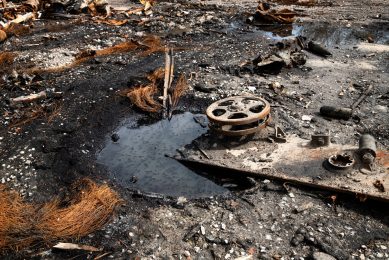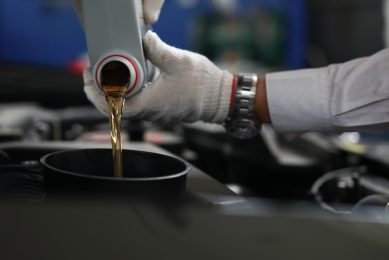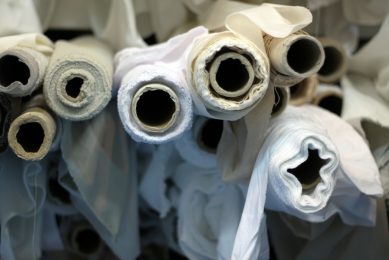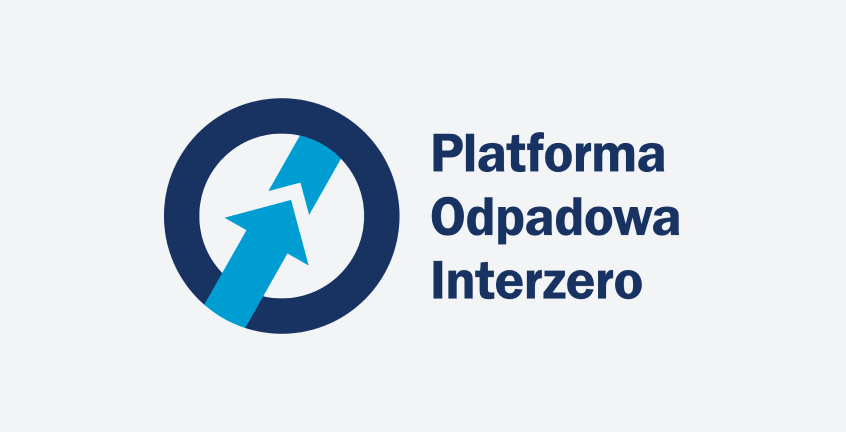What is electro-waste and WEEE?
Electro-waste is defined as waste electrical equipment that is not suitable for use. This includes equipment powered by electricity or batteries and accumulators, but also equipment that can generate, transmit or measure electric current or electromagnetic fields. Electro-waste is also known as electro-waste, electro-scrap, waste electrical and electronic equipment, or WEEE (Waste of Electrical and Electronic Equipment) for short.
Due to the content of hazardous substances (e.g. mercury, lead, CFCs, asbestos), most electro-waste is classified as hazardous waste.
Rules for handling waste electrical and electronic equipment in the company
Although not every company manages electro-waste, every company should follow the rules for handling waste electrical and electronic equipment. Electro-waste is subject to separate collection and therefore cannot be mixed with other fractions (e.g. mixed waste). All businesses are obliged to hand over electronic equipment to an electro-waste management company. In the case of large quantities of electro-waste, it becomes advantageous to order the collection of electro-waste, e.g. from a warehouse or from the company's premises. Such a service is usually provided by professional electro-waste collectors or electrical and electronic equipment recovery organisations.
At the same time, it is worth remembering that the collection of electro-waste from the company must not be delayed too long - electro-waste usually contains hazardous substances that may pose a threat to employees. Moreover, it is necessary to obtain permits and create appropriate conditions for storing WEEE. Inadequate storage of electro-waste, lack of sorting and mixing with other waste fractions are grounds for imposing a fine on the entrepreneur.
Classification and examples of electro-waste
From the point of view of businesses managing electro-waste and WEEE, the division of electro-waste introduced by the Waste Electrical and Electronic Equipment Act is important. According to its provisions, electronic and electrical equipment is divided into six groups:
- Equipment operating on the principle of temperature exchange, e.g. refrigerators, freezers, air conditioners, heaters.
- Screens, monitors and equipment containing screens having a surface greater than 100 cm2e.g. laptops, tablets, monitors, televisions.
- Lamps, including LEDs.
- Large equipment, any of whose external dimensions exceed 50 cm (excluding equipment included in groups 1-3), e.g. washing machines, dishwashers, photovoltaic panels.
- Small appliances none of whose external dimensions exceeds 50 cm (excluding those included in groups 1-3 and 6), e.g. food processors, irons, hoovers.
- Small-sized IT and telecommunications equipment, none of whose external dimensions exceed 50 cm, e.g. mobile phones, desktop computers, modems and routers.
Individual groups of electro-waste were distinguished, among other things, according to the method and cost of their treatment. This avoids situations where WEEE requiring special management technologies is classified and treated together with electro-waste that is easier to recycle.
Recovery, preparation for re-use and recycling of electro-waste - obligations for operators
The legal obligations of equipment producers are based on extended producer responsibility. They concern both the placing of electrical and electronic equipment on the market and the subsequent management of the resulting electro-waste.
One of the most important environmental obligations of businesses introducing equipment is the recycling and management of electro-waste. For each group of waste electrical and electronic equipment, the legislator has set minimum levels:
Gathering:
- not less than 65% average annual weight of equipment placed on the market or 85% weight of waste equipment generated within the country.
Recovery and preparation for re-use and recycling:
- for waste equipment arising from equipment groups 1 and 4 as defined in Annex 1 to the Act:
- recovery - 85% weight of waste equipment and
- preparation for reuse and recycling - 80% mass of waste equipment;
- for waste equipment arising from equipment belonging to equipment group 2 as defined in Annex 1 to the Act:
- recovery - 80% weight of waste equipment and
- preparation for reuse and recycling - 70% mass of waste equipment;
- for waste equipment arising from equipment groups 5 and 6 as defined in Annex 1 to the Act:
- recovery - 75% weight of waste equipment and
- preparation for reuse and recycling - 55% by weight of waste equipment;
- for waste equipment arising from equipment belonging to equipment group no. 3 defined in Annex 1 to the Act - recycling - to the amount of 80% by weight of that waste equipment.
Failure by a company introducing equipment to reach these levels will result in a product fee.
The Act also imposes other obligations on WEEE management companies, such as:
- registration in the Product and Packaging and Waste Management Database,
- organise and finance take-back of WEEE by collectors and treatment of collected electro-waste,
- keeping records including information on the weight of equipment placed on the market.
All these obligations can be fulfilled by companies themselves or entrusted to an electrical and electronic equipment recovery organisation.
Specific obligations of businesses related to the management of electro-waste and WEEE depend on the type of activity they carry out. They are defined by the Waste Electrical and Electronic Equipment Act (Journal of Laws 2015, item 1688), which distinguishes several categories of WEEE management entities:
- companies introducing the equipment,
- distributors and authorised representatives,
- WEEE treatment companies,
- WEEE recyclers and companies carrying out recovery processes other than recycling,
- electrical and electronic equipment recovery organisations.
BDO records of electro-waste and waste electrical and electronic equipment
Every entrepreneur who manages electro-waste is obliged to register with the BDO and then to keep records in the form of a Waste Inventory Card (KEO) and to report annually. Section IV of the registration form contains tables for entities introducing electronic equipment, collecting WEEE, operating a handling or recycling plant for electro-waste and for electrical and electronic equipment recovery organisations, respectively. Check how to correctly complete the BDO registration form.
The basic document generated in the BDO system is the Waste Transfer Note, which must be issued each time electro-waste is handed over for further management. The electronic KPO contains information on, among other things:
- the weight of donated electro-waste,
- waste code,
- companies: transporting and collecting electro-waste
- the date and time of delivery of the electro-waste.
Electro-waste and WEEE are recorded in BDO under the following codes:
| Code | Types of waste |
|---|---|
| 16 02 09* | Transformers and capacitors containing PCB |
| 16 02 10* | Discarded equipment containing or contaminated by PCBs other than those mentioned in 16 02 09 |
| 16 02 11* | Discarded equipment containing CFCs, HCFCs, HFCs |
| 16 02 12* | Discarded equipment containing free asbestos |
| 16 02 13* | Discarded equipment containing hazardous components other than those mentioned in 16 02 09 to 16 02 12 |
| 16 02 14 | Discarded equipment other than those mentioned in 16 02 09 to 16 02 13 |
| 16 02 15* | Hazardous components or parts removed from end-of-life equipment |
| 16 02 16 | Discarded components from discarded equipment other than those mentioned in 16 02 15 |
| 20 01 21* | Fluorescent tubes and other mercury-containing waste |
| 20 01 23* | Equipment containing CFCs |
| 20 01 35* | Discarded electrical and electronic equipment other than those mentioned in 20 01 21 and 20 01 23 containing hazardous components |
| 20 01 36 | Waste electrical and electronic equipment other than those mentioned in 20 01 21, 20 01 23 and 20 01 35 |
WEEE management and collection management in the Interzero Waste Platform
Keeping records of electro-waste is a time-consuming and tedious chore for any business managing WEEE. Waste logistics and electro-waste management processes can be optimised using the Interzero Waste Platform. POI is a digital tool for the comprehensive management of a company's waste management, which is additionally integrated with the BDO system. Using the Platform, it is no longer necessary to log in to the government system - all matters related to electro-waste records and the annual reporting obligation can be dealt with in the Platform panel.
Your company's Digital Waste Platform is:
- friendly login without the need for trusted profile authentication,
- automatic issue, correction and validation of KPOs,
- automatic creation of KEO records,
- maximising profits from the sale of raw materials,
- the ability to schedule electro-waste collections and order transports with one click,
- simple and quick creation of reports based on BDO data and other company environmental information entered in POIs,
- the ability to continuously monitor costs and revenues for the management of electro-waste and other waste fractions,
- remote access to all company data, without having to install separate software.
Depending on your company's needs, the Interzero Waste Platform also offers other functionalities to facilitate the recording and management of recovery logistics. You can try them out during a free trial period of up to three months and under the guidance of an Interzero expert who will help you implement POI in your company.






